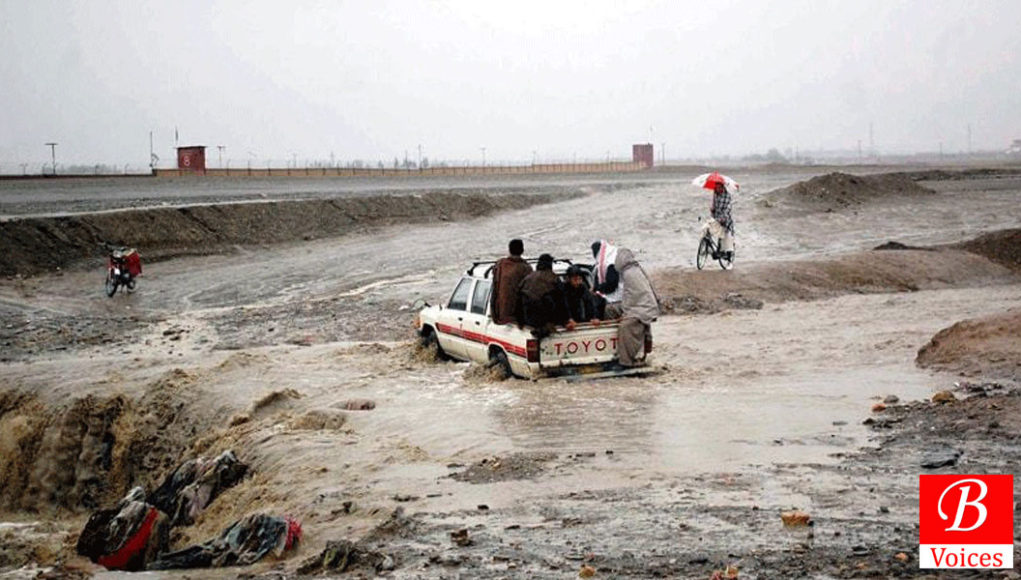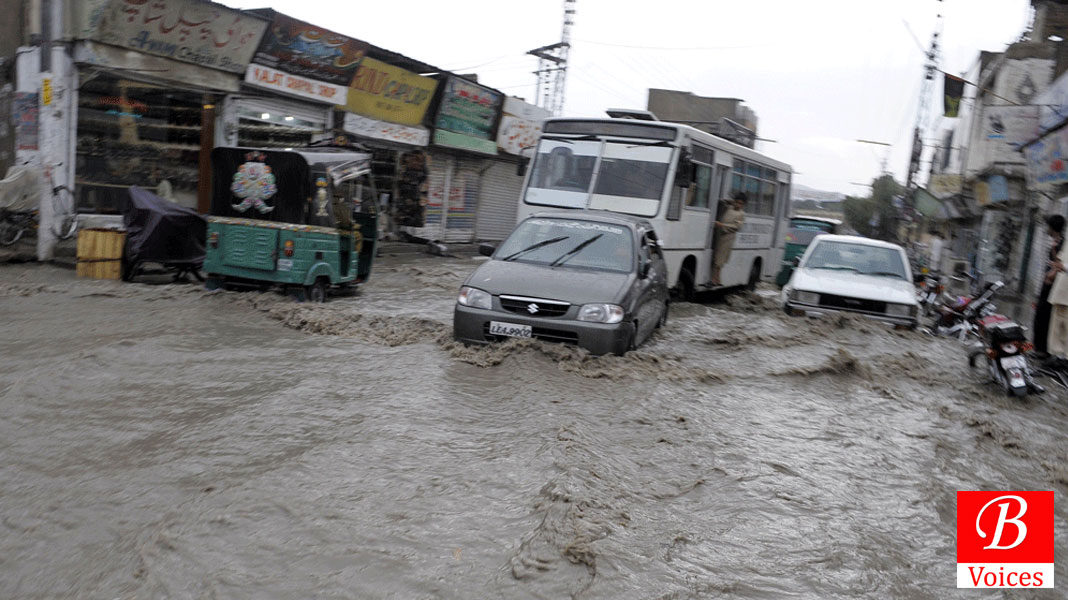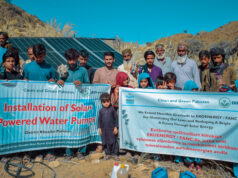Adnan Aamir
Imtiaz lives in the suburbs of the town of Nushki, in Balochistan. His primary source of livelihood is the cattle he owns. The ongoing drought, however, has made life difficult for him since January, this year. “My animals became so weak that nobody was prepared to purchase them,” he laments.
By mid-March, however, flash floods caused by heavy rain devastated many districts of Balochistan, including Nushki. Land communication between many districts was cut off and thousands of people were displaced from their homes. Imtiaz was one of the victims of the flash floods. He was not displaced, but the rainwater damaged his home severely. Given his already grim economic situation, now he has to use his remaining assets to carry out the rehabilitation of his house.
What happened with Imtiaz is a direct result of the effects of climate change in Balochistan. First, there was a prolonged dry spell which led to a drought and then, suddenly, there was a heavy downpour. The rainfall occurred at an unexpected time and that is why the government has been unable to respond in time to provide relief in the face of the damage caused by the flash floods. The two extreme weather events – the drought and the subsequent heavy rainfall – are highlighted in media, but there is little awareness or understanding of climate change at the local level.
In the middle of March, a sudden spell of cold weather shook Quetta. Normally, residents of the city put their sweaters away in their closets by March. Not this year, however. The cold wave, coupled with rainfall, made the weather pleasant in the city and locals enjoyed it, but few understood what these changing weather patterns meant.
The flash floods destroyed homes, blocked highways and cut Quetta off from all the surrounding districts. In addition to this, the flash floods resulted in the death of 13 people and injured many others. With the highways blocked, there was no mechanism through which relief could be provided to the victims. Moreover, the power supply remained suspended in the suburbs of Quetta and the adjoining districts. The obsolete electric transmission system could not bear the burden of heavy rains and caused loads of other problems, such as a shortage of drinking water and so on. Clearly, the disaster management apparatus of the provincial government is not up to the mark.
Another problem that the rainfall caused was that it shifted attention from the serious problem of drought and put in on the backburner. Before the sudden spell of rain, people were protesting against the government for failing to respond to the drought. As a result, the government had begun to act, to mitigate the issue. The subsequent flash floods, however, washed away all concerns about the drought. Now, there is a widespread belief that the rainfall has ended the drought, but this is not the case.
Balochistan has been facing a drought-like situation for the last 22 years. There was a severe spell from 1997 to 2005. After that, the intensity of the drought-reduced for a while, but nevertheless resurfaced every two to three years. The drought is caused by a lack of regular rainfall, which causes the depletion of groundwater resources. This, in turn, causes a reduction in pasture and grazing land for cattle. The lack of regular rainfall is a symptom of climate change, which is the primary reason for the current problem in Balochistan. According to experts, rare and sudden heavy downpours are not a viable alternative to regular rainfall.
Hashim Ghilzai, who served as the Commissioner of Quetta division, states that the ongoing drought in the province has three dimensions: “Hydrological, meteorological and socio-economic.” He added that it had a detrimental impact on the division, the residents of which are largely dependent on agriculture for their livelihood.
Maulvi Khudai Noor is another resident of Nushki who has been hit hard. He has lost his cattle and his grandchildren face malnutrition.
The World Bank is funding a multi-billion-rupee nutrition programme in Balochistan, but this can do little to address the root cause of malnutrition, which is essentially linked to climate change.
Another way in which climate change is taking its toll on people in the province is through a shortage of water. The water table has lowered over the years due to a scarcity of rain. The situation has been exacerbated by the thousands of water-extracting tubewells across the province. Used in the absence of canal water, tubewells suck water out of the ground in an unnatural way. Groundwater shortage essentially means less drinking water for the locals.
The citizens of Quetta are the direct victims of this water shortage. Pipelines used by the government to supply water to the homes of people dried up a long time ago. Now, water tankers are the primary source of water supply in the city. However, it is becoming difficult for tankers to find water, owing to the depletion of groundwater.
Normally, rainfall recharges the water table, but this can only happen effectively if there are plenty of small dams to store the rainwater. Currently, in the absence of small dams, the rainwater flows into the sea, without providing any benefits to the drought-stricken land.
Balochistan’s government must study and understand the impact of climate change to be able to effectively pre-empt any disaster situation, as well as improve its capacity to provide timely relief to the people. This will require political resolve and a huge amount of financial resources, both of which the provincial government currently lacks.
Originally published in Newsline Magazine
Share your comments!









